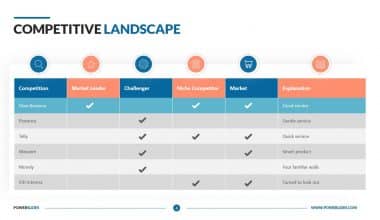Gone are the days when businesses had to pay for everything, including getting information. These days, every small business uses crowdsourcing for its marketing and funding goals. Crowdsourcing enables firms to access a wide range of skills and knowledge without incurring the traditional overhead costs of in-house workers. Even if you have to pay, it is at a fair price that no one can compare to hiring a freelancer or using its workers. It offers so many opportunities to businesses. If you want to understand how crowdsourcing works in business marketing or funding, or want to understand how to maximize it, relax, we’ve got you covered.
What is Crowdsourcing?
Crowdsourcing is the practice of compiling work, information, or opinions from a substantial number of contributors who provide their input online, on social media, or through mobile apps. Some crowdsourcing participants perform simple tasks for free, while others occasionally work as paid freelancers.
Crowdsourcing is becoming a more popular method of funding original ideas. Crowdsourcing exploits a group’s shared interest as an alternative to conventional financing options. It generally cut out the usual gatekeepers and intermediaries required to raise money.
Advantages and Downsides of Crowdsourcing
Crowdsourcing has several advantages for every business. These include speed, cost savings, and the chance to work with people who have skills that an internal team might not have. A corporation can cut the turnaround time from the normal one person per week to a matter of hours by breaking a task down into multiple smaller components and assigning those parts to a large number of people.
Many different jobs, like website construction and transcription, can be done via crowdsourcing. Companies that want to develop new products routinely solicit consumer opinion. Companies no longer need to rely on small focus groups when they can connect with millions of consumers via social media. This ensures that they acquire opinions from people from various socioeconomic and cultural backgrounds. Businesses that prioritize their customers often benefit from a greater understanding of their clientele and increased engagement or loyalty.
Pros
- Crowdsourcing brings individuals together to support a common goal or effort.
- A quick way to deal with things that take a long time.
- More engagement of connected networks that encourage adherence to the product or solution
Cons
- Results may be readily altered depending on the crowdsourcing technique used.
- Lack of ownership or idea confidentiality
- Possibility of failing to implement the greatest ideas, skills, or instructions and failing to attain the desired outcomes.
Examples of Crowdsourcing
Companies that only sometimes need certain abilities, such as coding or graphic design, might crowdsource those tasks rather than hire a full-time in-house workforce in order to save money. Another example is when crowdsourcing typically involves splitting up a large assignment. Additionally, businesses use it occasionally to assess how different people perform on the same project.
What Are the Main Types of Crowdsourcing?
The process of collecting information or resources from a large number of individuals is called crowdsourcing. This can be broadly divided into four main groups:
- Wisdom: According to the wisdom of crowds theory, large groups of people are more intelligent than single experts. This is true when it comes to solving issues or identifying values.
- Creation: Crowd creation is the collective process of building or creating anything. Wikipedia and other wikis are examples of this. Software that is open-source is another fantastic illustration.
- Voting: Crowd voting uses the democratic principle to choose a certain course of action or policy by “polling the audience.”
- Funding: To gather money for various goals, crowdfunding involves requesting relatively small payments from a large number of funders.
What Is an Example of Crowdsourcing?
Competitions, virtual labor markets, public online cooperation, and data contribution are all examples of crowdsourcing techniques.
What Is Crowdsourcing in Simple Words?
Crowdsourcing is the process of asking a large number of individuals for the information, goods, or services that are required.
What Are the 4 Types of Crowdsourcing?
There are four main sorts of crowdsourcing: crowd creation, crowd voting, crowd wisdom, and crowdfunding.
What is Crowdsourcing in Marketing?
Crowdsourcing is a marketing strategy that involves obtaining user input to guide a company’s product development and advertising campaigns. It gives customers the chance to suggest changes to a company’s operations or the features they should include in its products. Crowdsourcing marketing techniques include competitions where participants can vote on upcoming product releases, suggest names for current items, or show how they use a company’s products in their daily life.
What Is Crowdsourcing’s Use in Marketing?
By allowing the general public to connect with businesses, crowdsourcing serves as a marketing strategy that may motivate consumers to learn more about the products and services offered by the company and make a purchase. Businesses use crowdsourcing as part of their marketing strategy to create original ideas for their sector and customize marketing materials that are specifically targeted to their target market. People utilize crowdsourcing as a publicity campaign by inviting their own network to participate in a company’s products and services.
Crowdsourcing Benefits for Marketing
For a number of reasons, consider using crowdsourcing as a marketing strategy. Some of the key benefits of crowdsourced marketing include the ones listed below:
#1. Improving Analytics
When crowdsourcing ideas, information, and resources, you can learn from a sizable sample of people. Participants in many crowdsourcing projects are required to fill out forms containing their demographic data, purchase habits, and other vital information. This makes it more affordable to use the crowd to conduct market research and learn more about their current audience.
#2. Involving Customers
Consumers can interact with a company and its products directly through crowdsourcing, which can boost brand loyalty and make customers feel more invested in the business. Promotions and opportunities for brand exposure may inspire customers to think about and utilize a company’s products.
#3. Generating Sales
A company’s visibility as a consequence of a crowdsourcing project might boost sales. People can learn about a brand for the first time through crowdsourcing and make their first purchase because they connect with the company. Some customers would also like it if other customers helped them customize a product to meet their specific needs. This is because folks who utilize the product have insightful comments on how to make it better.
#4. Building Content
When you let the consumer choose the kind of content they want to see, you can easily curate your brand to meet their expectations. By showcasing user contributions and asking customers for feedback by providing them with the kinds of content marketing they are most interested in, you may build a following within a niche.
Necessary Conditions for Crowdsourced Marketing
Every business must set a few prerequisites that must be satisfied for crowdsourced marketing strategies to succeed;
- A straightforward idea: An efficient crowdsourcing marketing campaign should concentrate on a clear product or idea that the company can quickly adjust to satisfy client demands. This is because crowdsourcing requires getting feedback from a wide range of people.
- Information gathering terms: To ensure high-quality submissions from the audience, marketers should outline specific criteria, conditions, and circumstances for individuals who intend to participate in the crowdsourcing campaign.
- A huge potential audience: Crowdsourcing operations need to be able to reach a large audience. This is to guarantee that the organization receives a variety of contributions to consider and choose from.
- Eligible participants: Your target audience should be motivated to submit ideas and have the knowledge and experience required to produce the kind of crowdsourced submissions you’re looking for.
Types of Crowdsourcing Marketing
Advertisers use a few main types of crowdsourcing in their marketing campaigns. Here are a few typical uses of crowdsourcing in marketing, along with an explanation of how they work:
#1. Product Suggestions
Asking clients for their opinions directly is a popular approach to crowdsourcing marketing. One option to crowdsource product suggestions is to have a form where members of the public may submit ideas and vote on which other proposals they favor.
#2. Producing Content
Several companies use crowdsourced content to add a personal touch to their advertising. Businesses might collect public submissions for use in marketing materials or crowdsourced advertising campaigns. They ask their audience for contributions in the form of writing, audio, video, or photos that they can reuse or use to strengthen their brand.
#3. Crowdfunding
Crowdsourcing funding or crowdfunding is the technique of asking a large number of people to contribute small amounts of money to a project in order to meet a sizable fundraising goal. Even though crowdfunding is typically used to raise money for businesses, it may also be used as a marketing approach. Businesses can utilize crowdfunding campaigns to promote new products and introduce their brand to prospective clients. These are people who could be interested in making contributions and possibly profiting from their ideas. Most often, they share it with their friends and family, who may also be interested in it.
Using the Internet, social media, and mobile apps, a large number of individuals can contribute their work, knowledge, or opinions through crowdsourcing.
What Are the Benefits of Crowdsourcing?
Crowdsourcing enables businesses to access a wide range of skills and knowledge without incurring the typical overhead expenditures of in-house staff by allowing them to farm out work to people anywhere in the nation or the world.
How Is Crowdsourcing Used?
Through the use of crowdsourcing, businesses may access individuals with a variety of skills and viewpoints from around the world. Aside from this, they also get to save time and money.
Who Uses Crowdsourcing?
Businesses, NGOs, researchers, and so on. Anyone can employ crowdsourcing for almost any sort of business feature, from logos and visual design to recipes and answers to frequently asked questions.
What is Crowdsourcing Funding?
Crowdsourcing funding, or crowdfunding, is a method of raising money by combining the efforts of friends, family, customers, and individual investors. In order to expand reach and exposure, this technique makes use of the collective efforts of many people, namely those who are online and use social media and crowdfunding sites.
What Is Special About Crowdfunding?
Crowdfunding essentially operates in the opposite direction from the conventional technique in terms of financing for businesses. In the past, if you wanted to introduce a new product or start a firm, you had to gather your prototypes, market research, and business plan before making a presentation of your idea to a small number of wealthy individuals or groups. Banks, angel investors, and venture capital firms were some of the primary participants in these funding streams.
On the other hand, crowdfunding platforms are entirely inside that funnel. By giving you, the entrepreneur, a single platform to generate, present, and share your pitch resources, this tactic greatly speeds up the usual procedure. Months would be spent in the past combing through your own network, vetting potential investors, and using your own resources (time and money) to get in touch with them.
Different Forms of Crowdsourcing
Similar to the several distinct types of capital raising for businesses at various stages of development, there are various types of crowdfunding. Depending on the kind of products or services you offer and your expansion goals, you will need to decide which crowdfunding site to use. The three primary types of crowdfunding are reward-based, donation-based, and equity-based (this guide will focus mostly on rewards-based and equity).
#1. Donation-Based Crowdfunding
Donation-based crowdfunding, in general, refers to any initiative where there is no financial incentive for contributors or investors. Its fundraising campaigns are often utilized by nonprofits, charities, and healthcare costs.
#2. Rewards-Based Crowdfunding
People donate to your business through rewards-based crowdfunding in exchange for a “prize.” This is frequently a visual depiction of the product or services your business offers. Despite the fact that there is no financial or equity return with this strategy, it still tends to be viewed as a subset of donation-based crowdfunding. Because it enables company owners to thank their contributors without having to spend a lot of extra money or give up ownership rights, this technique is a popular choice both here on Fundable and on other well-known crowdfunding websites, such as Kickstarter and Indiegogo.
#3. Equity-Based Crowdfunding
Contrary to donation and reward-based models, equity-based crowdsourcing enables contributors to trade funds for equity shares, giving them a stake in your company. Your contributors make money off of their investment and ultimately receive a dividend or distribution as equity owners as a portion of the earnings.
What Is Crowdsourcing in Business?
A great way to have many minds working together to solve difficult problems is through crowdsourcing. Crowdsourcing, which involves asking a large number of people for suggestions and solutions, has many benefits compared to internal ideation processes. In addition to having access to brilliant ideas, businesses can engage their customers and generate awareness around them. To ensure everything goes according to plan, you’ll also need to manage a few additional issues, like deciding who gets to own and profit from innovative ideas.
Unexpected Solutions to Difficult Problems
The fundamental benefit of crowdsourcing is the ability to find novel solutions. When a business or organization considers problems internally, it’s easy to fall back on old paradigms. After all, changing a company’s long-standing tradition of doing something a certain way could be difficult.
More Diversity of Opinion
Expanding the skill pool can also result in the creation of fresh concepts and a wider range of viewpoints. Staffing numbers for many companies, especially smaller enterprises, may not be able to provide the kind of inventive variation needed to address the most complex problems.
With crowdsourcing, all of that might change. By allowing more thinkers to participate in a problem-solving exercise, a company can gain access to a range of knowledge, experience, expertise, and situations that it otherwise wouldn’t have been able to.
Fewer Management Responsibilities
The management aspect of crowdsourcing has several benefits, although not being as well recognized as the other aspects. The person in charge of planning and overseeing a project is typically under a lot of management pressure when businesses innovate internally. Along the way, designers and thinkers need to be inspired and reminded to share their ideas.
More Clamorous Advertising
Because it is a fun public spectacle, crowdsourcing may be a great way to generate marketing buzz. Instead of adopting the same old traditional problem-solving procedures within a company, crowdsourcing has a collaborative and competitive element to it. This increases the number of your fans and gives people something to talk about.
Increased Speed at Solving Issues
Crowdsourcing involves accessing the best ideas as well as locating them as soon as is practical. The efficiency of a company’s personnel determines how quickly it can resolve internal problems. Even the best inventors within a corporation can only move so swiftly, after all.
Crowdsourcing is the process of gathering work, knowledge, or opinions from a sizable number of people who contribute their information online, on social media, or through mobile apps.
What Are the Different Types of Crowdsourcing?
Crowd wisdom, crowdfunding, crowdsourcing and forecasting, crowdsourcing and invention, crowdsourcing and authenticity (C&A), crowd editing, crowd control, crowd curation, and crowd care are examples of different forms of crowdsourcing.
How Does Crowdsourcing Work in 6 Easy Steps?
- You would like to solve a problem at your company.
- Can you explain the issue to your audience?
- The crowd tries to attack it.
- Best Ideas Win
- Awesome idea makers are noticed
- You create wonderful products.
Conclusion
Crowdsourcing has several benefits for companies searching for innovative suggestions from a large number of people to improve their products or services, especially as the nature of work shifts more and more towards an online, virtual environment. Crowdsourcing markets for real estate and philanthropy are also beginning to grow and bring people from all backgrounds together to work toward a common goal.
What Is Crowdsourcing FAQs
What apps use crowdsourcing?
- FireChat.
- Duolingo.
- Quora.
- Airbnb.
- Uber.
Is Google a crowdsourcing?
In order to help the worldwide research and developer communities, Google open-sources some Crowdsource data.
- INNOVATION STRATEGY IN BUSINESS WITH DETAILED EXAMPLE
- COMMERCIAL REAL ESTATE INVESTING: What It Entails and How to Start Up Investing
- OUTSOURCING BUSINESS: Processes & How to Start One in Simple Steps






